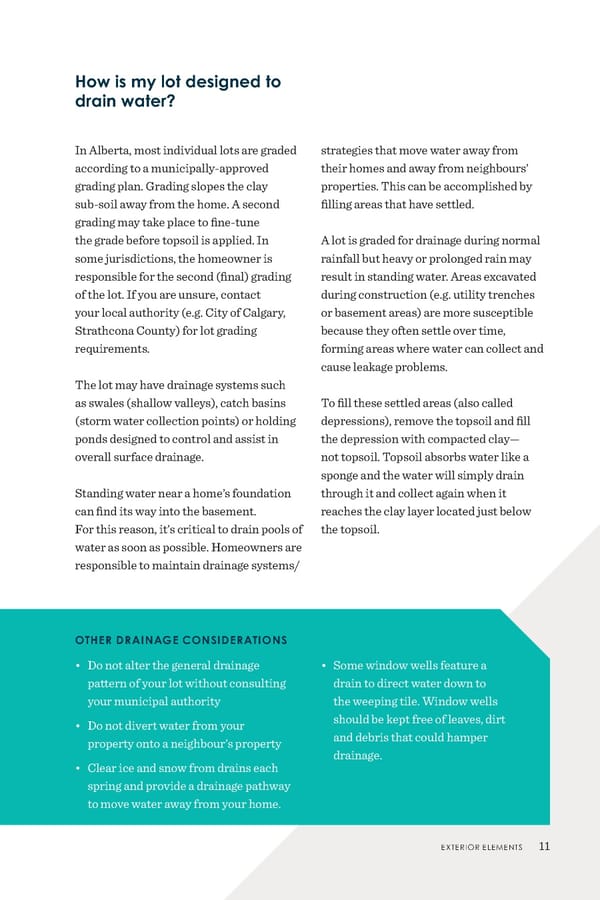How is my lot designed to drain water? • Do not alter the general drainage pattern of your lot without consulting your municipal authority • Do not divert water from your property onto a neighbour’s property • Clear ice and snow from drains each spring and provide a drainage pathway to move water away from your home. • Some window wells feature a drain to direct water down to the weeping tile. Window wells should be kept free of leaves, dirt and debris that could hamper drainage. OTHER DRAINAGE CONSIDERATIONS In Alberta, most individual lots are graded according to a municipally-approved grading plan. Grading slopes the clay sub-soil away from the home. A second grading may take place to fine-tune the grade before topsoil is applied. In some jurisdictions, the homeowner is responsible for the second (final) grading of the lot. If you are unsure, contact your local authority (e.g. City of Calgary, Strathcona County) for lot grading requirements. The lot may have drainage systems such as swales (shallow valleys), catch basins (storm water collection points) or holding ponds designed to control and assist in overall surface drainage. Standing water near a home’s foundation can find its way into the basement. For this reason, it’s critical to drain pools of water as soon as possible. Homeowners are responsible to maintain drainage systems/ strategies that move water away from their homes and away from neighbours’ properties. This can be accomplished by filling areas that have settled. A lot is graded for drainage during normal rainfall but heavy or prolonged rain may result in standing water. Areas excavated during construction (e.g. utility trenches or basement areas) are more susceptible because they often settle over time, forming areas where water can collect and cause leakage problems. To fill these settled areas (also called depressions), remove the topsoil and fill the depression with compacted clay— not topsoil. Topsoil absorbs water like a sponge and the water will simply drain through it and collect again when it reaches the clay layer located just below the topsoil. EXTERIOR ELEMENTS 11
 ANHWP Care & Maintenance Guide 2022 Page 12 Page 14
ANHWP Care & Maintenance Guide 2022 Page 12 Page 14